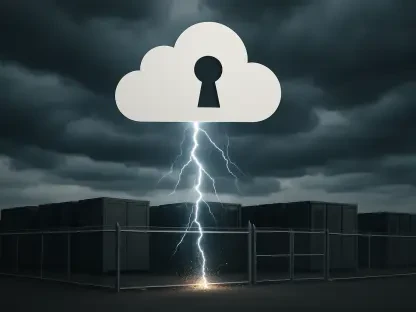I’m thrilled to sit down with Maryanne Baines, a renowned authority in cloud technology and cybersecurity. With her extensive experience evaluating cloud providers, tech stacks, and their applications across various industries, Maryanne offers unparalleled insights into the evolving landscape of IT security. Today, we’ll explore the critical issue of IT visibility gaps in modern enterprises, the transformative potential of Cyber Asset Attack Surface Management (CAASM), and how channel partners can play a pivotal role in bridging these gaps while fostering long-term relationships with their clients.
Can you walk us through what the ‘IT visibility gap’ means in today’s complex enterprise environments?
Absolutely. The IT visibility gap refers to the blind spots that organizations have in understanding their full IT estate. Over the past few years, enterprises have seen their environments expand dramatically with cloud migrations, remote work, and bring-your-own-device (BYOD) policies. This sprawl means that many devices and systems are simply off the radar, outside the scope of security policies. It’s a major challenge because if you don’t know what’s in your network, you can’t protect it.
How have factors like cloud migration and remote working policies contributed to this visibility challenge?
Cloud migration has scattered data and workloads across multiple platforms, often with inconsistent oversight. Remote working policies have added another layer of complexity, with employees logging in from personal devices or unsecured networks in places like coffee shops. These environments are dynamic, with assets spinning up and down constantly, and traditional tools just aren’t designed to keep track of this fluidity. The result is a fragmented view of the IT landscape, leaving gaps that cyber threats can exploit.
What types of devices or systems often slip through the cracks in these sprawling setups?
Unmanaged BYOD devices are a big one—think personal laptops or smartphones that employees use for work. Then there’s IoT gear, like smart thermostats or cameras in office spaces, which often go unnoticed. Operational technology in industrial settings is another blind spot, as are ephemeral cloud instances that spin up for short-term tasks. These assets frequently lack security updates or access controls, making them easy targets for attackers.
Why do you think so many organizations only prioritize asset visibility after a security breach happens?
It often comes down to a lack of awareness or resources. Many companies don’t realize how much of their infrastructure is invisible until a breach exposes it. There’s also a tendency to focus on immediate threats rather than foundational issues like visibility. Budgets are tight, and without a clear incident to point to, it’s hard to justify investing in discovery tools. Unfortunately, by the time a breach occurs, the damage is done, and the cost of recovery far outweighs the investment in prevention.
What are some common misconceptions about the importance of proactive visibility that you’ve encountered?
One big misconception is that existing security tools are enough. Many assume their firewalls or antivirus software cover everything, but these tools don’t provide a full inventory of assets. Another is the belief that their environment is static—leaders often think they know what’s on their network, but with cloud and remote work, that’s rarely true. There’s also a false sense of security from periodic scans, which miss dynamic changes and leave gaps that attackers can exploit.
How can channel partners help shift this reactive mindset to a more proactive approach?
Channel partners can play a huge role by educating clients on the risks of invisibility and the value of proactive measures. They can start by demonstrating how much of the network is currently unknown through quick assessments or proof-of-concept deployments. By framing visibility as a foundation for broader security strategies, partners can help clients see it as a necessity, not a luxury. Building trust and showing tangible results—like identifying rogue devices—can shift the conversation from reaction to prevention.
You’ve mentioned that traditional network discovery tools are falling short. Can you elaborate on why that is?
Traditional tools were built for static, on-premises networks where assets didn’t change much. They rely on scheduled scans or network probes that assume a fixed inventory. But today’s IT environments are anything but static—cloud instances come and go, remote devices connect sporadically, and IoT devices multiply. These tools can’t keep up with the pace of change, so they miss a significant portion of the estate, leaving organizations vulnerable.
Can you describe what Cyber Asset Attack Surface Management, or CAASM, is and how it tackles these visibility issues?
CAASM is a modern approach to asset management that focuses on continuous, real-time visibility across an organization’s entire IT environment. Unlike older methods, it integrates data from multiple sources—endpoint detection, cloud APIs, identity platforms, and more—to create a comprehensive, up-to-date inventory. It addresses visibility issues by not just listing assets but also providing context, like risk scores or end-of-life alerts, so teams know what to prioritize. It’s about turning raw data into actionable insights.
How does CAASM stand out from traditional periodic scans in terms of providing accurate and timely information?
Periodic scans are like taking a snapshot—they only show what’s there at a specific moment and often miss dynamic changes. CAASM, on the other hand, operates continuously, pulling data in real time from various systems. This means it captures assets as they come online or go offline, ensuring the inventory is always current. The accuracy is far superior because it validates data across sources, reducing false positives and giving a true picture of the environment.
What kinds of actionable insights does CAASM offer to IT and security teams?
CAASM goes beyond just listing devices; it highlights risks and vulnerabilities. For instance, it can flag assets that haven’t been patched, devices nearing end-of-life, or systems outside access control policies. It prioritizes these issues with risk scoring, so teams know where to focus first. This cuts through the noise of multiple dashboards and helps prevent alert fatigue, enabling teams to address critical gaps before they’re exploited.
You’ve said that CAASM can reveal unknown devices almost instantly. Can you share a story of how this has caught a client off guard?
I remember working with a mid-sized financial firm that thought they had a tight grip on their network. When we implemented CAASM and connected the APIs, the dashboard lit up with dozens of unmanaged devices—everything from employee personal laptops to forgotten IoT sensors in their office. They were stunned to see that nearly 20% of their infrastructure was completely off their radar. It was a wake-up call about how much risk they were carrying without even knowing it.
Why do you think some organizations hesitate to see CAASM as a critical investment?
Often, it’s because they don’t fully grasp the scale of their visibility problem until a crisis hits. Many view discovery as a nice-to-have rather than a must-have, especially when budgets are constrained. There’s also a reluctance to add another tool to their already crowded security stack. Without clear education on how CAASM integrates with and enhances existing systems, it can seem like an unnecessary expense rather than a strategic asset.
How can channel partners help demonstrate the business value of CAASM to their clients?
Partners can start by running small-scale pilots or assessments to show concrete evidence of unknown assets and risks. They should frame CAASM not as a standalone tool but as a foundation that strengthens the entire security posture. By tying it to business outcomes—like reducing downtime from breaches or ensuring compliance—partners can make the value clear. Building case studies or sharing success stories from similar industries can also help clients see the return on investment.
How does offering CAASM enable channel partners to evolve from product sellers to strategic advisors?
CAASM positions partners as problem-solvers rather than just vendors. By helping clients uncover and address visibility gaps, partners demonstrate expertise and build trust. This opens the door to broader conversations about security strategy, allowing them to recommend complementary services like risk mitigation or managed security. It’s a shift from one-off transactions to ongoing engagements, where partners become integral to shaping a client’s long-term security roadmap.
What is your forecast for the role of CAASM in the future of cybersecurity?
I believe CAASM will become a cornerstone of cybersecurity as IT environments grow even more complex. With the rise of hybrid cloud, IoT, and remote work, visibility will only get harder, and CAASM’s ability to provide real-time, contextual insights will be non-negotiable. I expect it to integrate even deeper with other security tools, becoming a central hub for risk management. For channel partners, it’s a massive opportunity to lead the charge in helping organizations stay secure and resilient in an ever-changing landscape.









